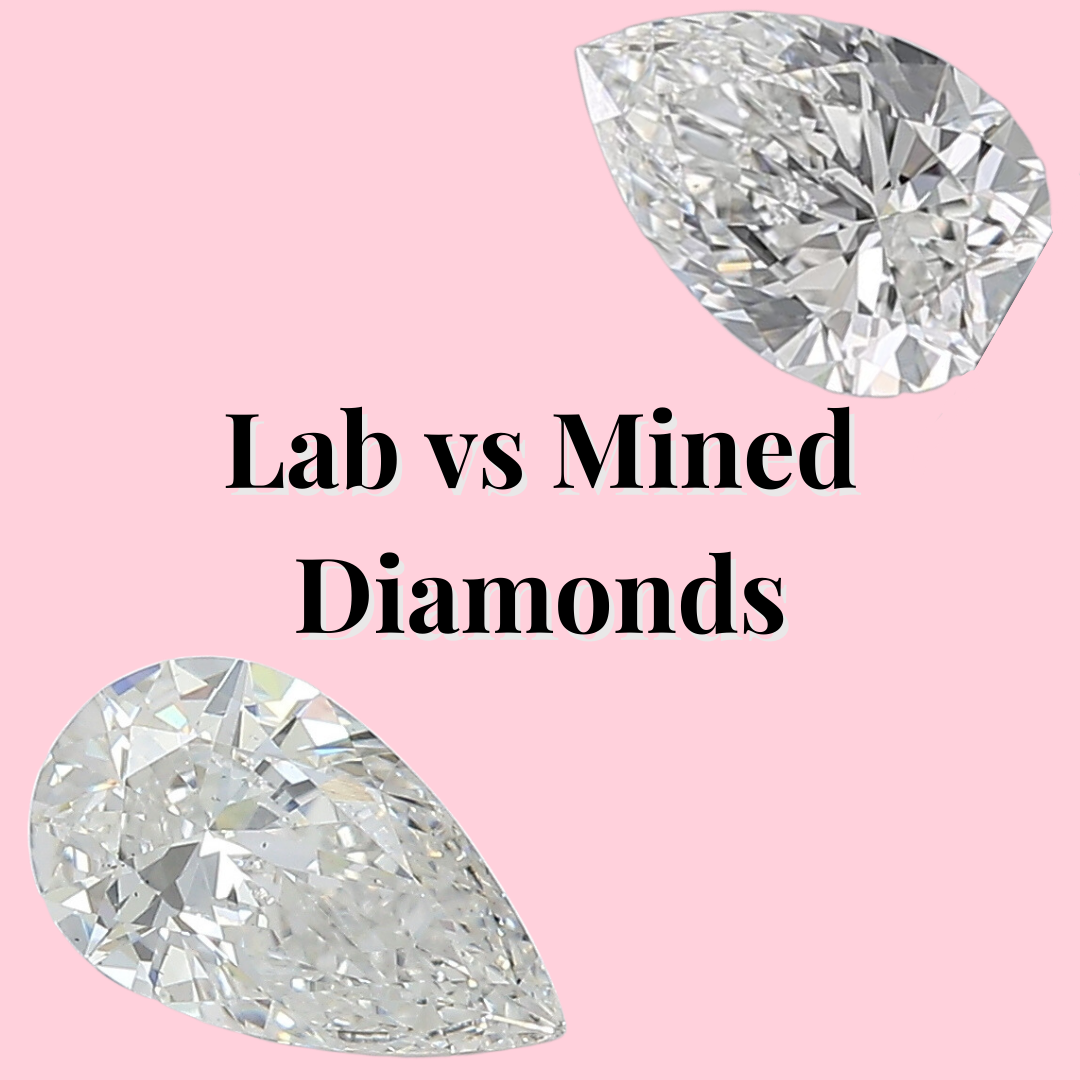
Lab-Grown vs. Mined Diamonds: A Sparkling Debate
Diamonds have long been cherished as symbols of love, luxury, and endurance. However, a significant shift has occurred in the diamond industry in recent years. The emergence of lab-grown diamonds has sparked a debate over which is the superior choice: lab-grown or mined diamonds. In this blog, we'll explore the key differences between these two types of diamonds, considering factors such as quality, environmental impact, and ethical concerns.
The Basics: How Diamonds Form
Before diving into the comparison, let's briefly understand how diamonds are created. Both lab-grown and mined diamonds have the same chemical composition, as they are primarily composed of carbon atoms arranged in a crystal lattice structure. The primary difference lies in how they are formed.
1. Mined Diamonds:
- Mined diamonds are formed deep within the Earth's mantle under immense pressure and high temperatures, over billions of years.
- They are brought to the surface during volcanic eruptions via Kimberlite pipes.
- Mining diamonds involve extracting them from these ore deposits, a process that can be environmentally destructive and labor-intensive.
2. Lab-Grown Diamonds:
- Lab-grown diamonds are created in controlled environments, such as laboratories, using one of two main methods: High Pressure High Temperature (HPHT) or Chemical Vapor Deposition (CVD).
- HPHT simulates the natural diamond-growing conditions, while CVD uses a carbon-rich gas to grow the diamond layer by layer.
- This process is significantly more controlled and eco-friendly compared to mining.
Quality and Purity
One of the most critical factors when comparing lab-grown and mined diamonds is their quality and purity.
- Lab-Grown Diamonds:
- Lab-grown diamonds often have fewer impurities and fewer inclusions compared to mined diamonds.
- The controlled growth environment allows for precise control over the diamond's characteristics, resulting in consistent quality.
- Mined Diamonds:
- Mined diamonds can vary widely in quality and may contain impurities and inclusions.
- The rarity of large, high-quality mined diamonds can make them incredibly expensive.
Environmental Impact
The environmental impact of diamond production is a significant concern.
- Lab-Grown Diamonds:
- Lab-grown diamonds are generally considered more environmentally friendly. They have a smaller carbon footprint and do not involve the destruction of ecosystems associated with mining.
- The use of renewable energy sources in the lab-grown diamond industry can further reduce their environmental impact.
- Mined Diamonds:
- Mining for diamonds can result in deforestation, habitat destruction, and soil erosion.
- The carbon emissions associated with mining are substantial, contributing to climate change.
Ethical Considerations
Ethical concerns have also fueled the debate between lab-grown and mined diamonds.
- Lab-Grown Diamonds:
- Lab-grown diamonds are often perceived as more ethically sound since they do not have the same issues with conflict diamonds.
- They are traceable, making it easier to ensure they are sourced ethically.
- Mined Diamonds:
- Mined diamonds have a history of being associated with conflict zones, leading to ethical concerns about their origins.
- While the above is a concern, efforts have been made to establish certification processes like the Kimberley Process to address these issues.
The choice between lab-grown and mined diamonds ultimately depends on individual preferences and values. Lab-grown diamonds offer a more environmentally friendly and potentially ethical alternative, with consistent quality. On the other hand, mined diamonds hold their allure as natural wonders created deep within the Earth, though their environmental and ethical concerns persist. The ongoing debate between these two options ensures that consumers have choices that align with their priorities, whether it be purity, environmental consciousness, or ethical considerations.
